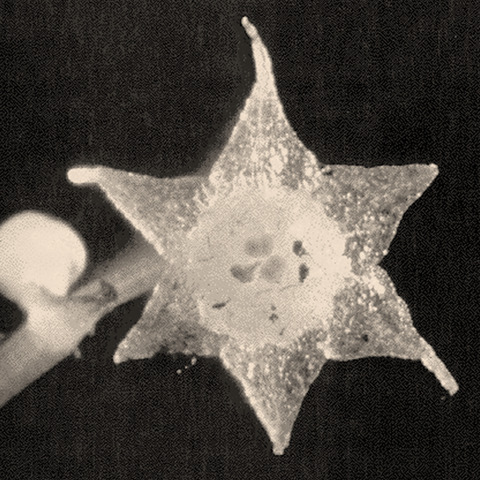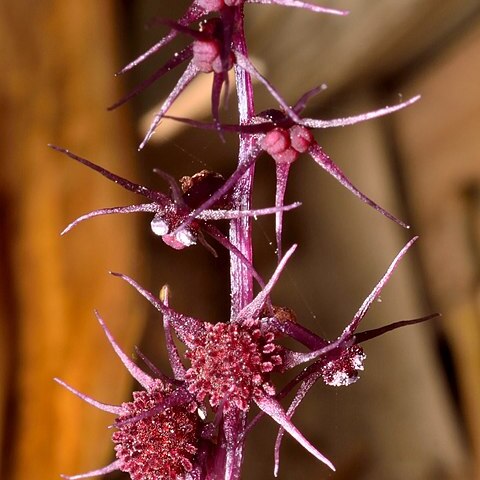Erect herbs, echlorophyllous, mycotrophic, white, yellow or often red, monoecious, dioecious or, rarely, bisexual. Stems erect, simple or rarely branched, slender. Leaves scalelike or absent, alternate. Inflorescence a raceme or cyme. Flowers regular, of 3–10, usually 6, equal or alternately unequal tepals in a single whorl; tepals often connate at base and appendiculate-prolonged at apices, commonly reflexed after anthesis. Male flowers: stamens 2–4 or 6, filaments short or absent; anthers 2–4-thecal, dehiscing longitudinally or transversely. Female flowers: carpels numerous, small, free, each with a terminal, lateral or basal style; ovules single. Fruit a follicle or an achene. Seeds ellipsoid, with endosperm.
Saprophytic annual or perennial herbs. Leaves alternate, reduced to scales. Flowers unisexual, sometimes on separate plants, or, more rarely, hermaphrodite, in racemes or contracted raceme-like panicles. Perianth 3-6(-10)-partite, petaloid. Male flowers with (2-)3-6 stamens, rarely with 3 stamens and 3 staminodes; anthers sessile or with short filaments, with 2 or 4 thecae opening by transverse slits; pollen globose, smooth, without apertures. Female flowers with numerous free carpels; style terminal or ± gynobasic; ovule erect, anatropous. Monocarps with a single seed, dehiscent or not. Seeds ellipsoid, with copious endosperm
Male flowers: stamens 2-6, sometimes only half of them fertile; anthers free or immersed in the mass of the receptacle, 2-locular, dehiscing mostly transversely; connective sometimes produced into long subulate appendages
Flowers very small, racemose or subcorymbose, with decurved bracteate pedicels, actinomorphic, monoecious, dioecious or rarely polygamous
Perianth-segments 3-8, 1-seriate, valvate, sometimes appendaged at the apex, at length reflexed
Leafless saprophiytic herbs with simple or subsimple stems furnished with a few pale scales
Carpels several, free, 1-locular; style terminal to almost basal; ovule solitary, basal
Seed erect, with a fleshy white oily undifferentiated nucleus
Female flowers rarely with staminodes
Fruits crowded, opening by a slit


